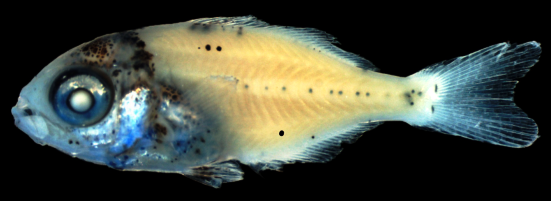Applications of Ichthyoplankton Data
Fish eggs and larvae are collectively known as ichthyoplankton, and comprise cost-effective biological indicators of environmental impact and monitoring in all aquatic environments (view PDF). As such, information on early fish stages can be used to underpin environmental impact assessments (EIAs) required for the permitting process as well as preparation of environmental inception reports and management plans.
Multiple uses range from evaluation of potential impacts of desalination plants (impingement and entrainment of early fish stages via seawater intakes) and sewage outfalls on local marine fish and fisheries, to monitoring of changes in water column ecology following dredging works and associated sediment plumes derived from infrastructure development. Other uses comprise:
- Assessment and monitoring of environmental impacts
- Transport of foreign fish species in ship's ballast water
- Colonisation assessment of invasive fish species in ports and other aquatic systems
- Validation of coastal processes, particularly hydrodynamic and advection/dispersion models
- Assessment and monitoring of recreational and commercial fishes and fisheries
- Identification of spawning areas, patterns and seasons
- Back-calculation of spawning dates/locations (aging larval ear bones or otoliths)
- Identification of coastal/oceanic productivity "hot spots"
- Characterisation and discrimination of water masses
- Identification of fish migratory patterns
- Fish stock differentiation (genetic markers)
- Biomass estimation – daily egg production method


